Start Exploring Keyword Ideas
Use Serpstat to find the best keywords for your website
6 Content Marketing Skills You Need To Master

At the same time, plenty of naysayers insisted that content marketing is dead and that it's just a matter of time before it stops working. With so much harm done by Google's algorithms lately, you couldn't blame them.
With this in mind, you may be interested in learning a thing or two about content marketing. There are many fluff articles out there, so I'll try to show you the most practical guide to content marketing skills in 2021. Let's get started.
Keyword research skills
The essence of keyword research is to find the right keywords to guide your content creation process. Instead of wasting time on a keyword that can (potentially) get you 100 visitors per month, you'll want to write and optimize for the one that can get 1,000 visitors every month. That sounds pretty simple and logical.
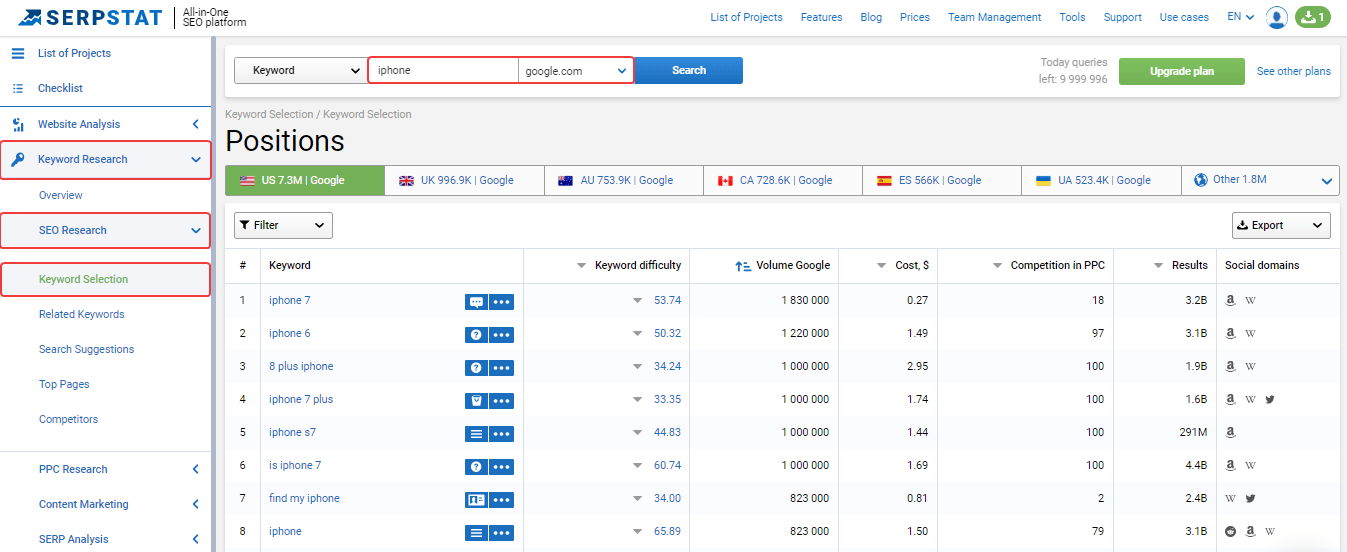
Not only is this a good way to get familiar with your competitors' content, but it will also show you some low-hanging fruit. If a keyword is easy to rank for and the competitors' content is subpar, you can easily create something better and outrank them quickly.
There are three main aspects to keep in mind with each keyword:
- The search volume (how many people search for it every month)
- The keyword difficulty (how difficult it is to rank on the first page for this keyword)
- The search intent (what action someone will take after reading your article around this keyword - read, click through, buy, etc)
Not all keywords are created equal
Keywords that have high volume probably also have high difficulty and vice versa. While high search volume may get you more traffic, the search intent may not be to convert - these readers are more likely to browse and read instead of buy. If you find a keyword that does it all, consider yourself lucky.
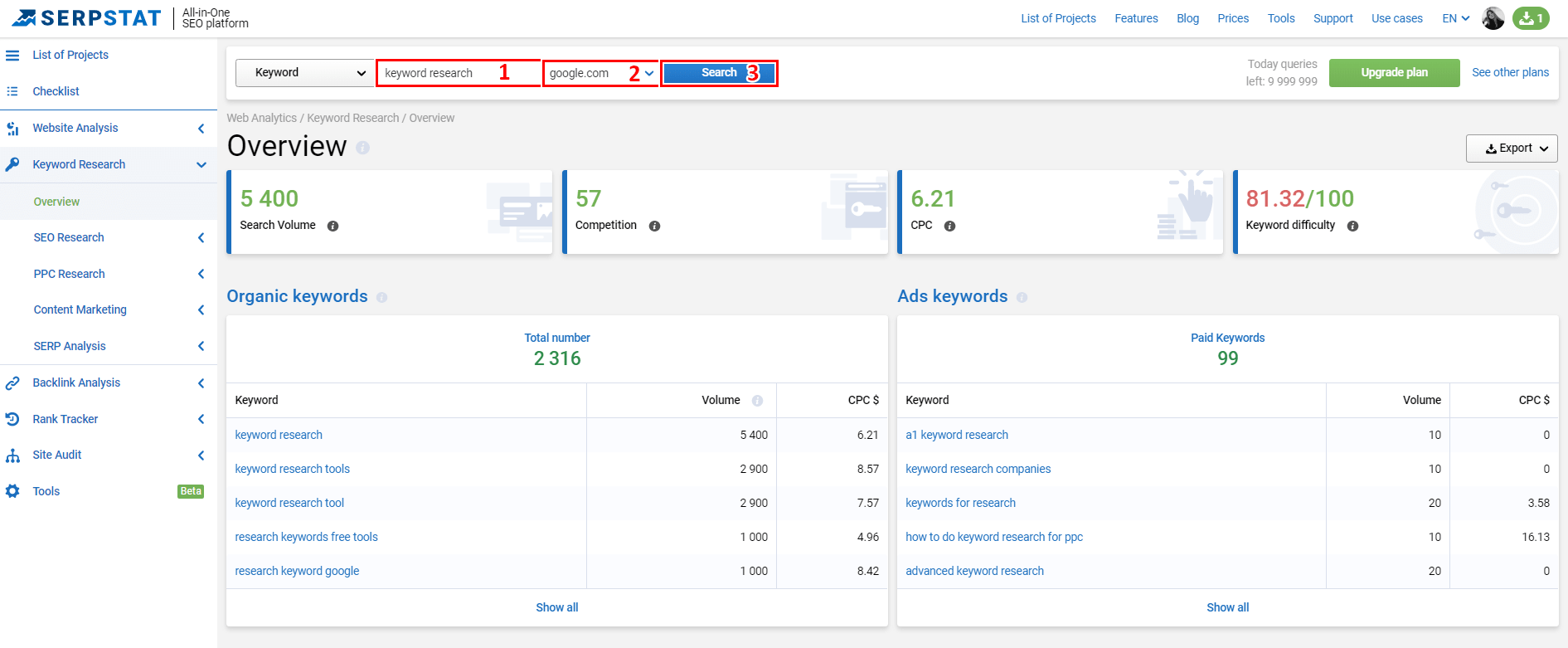
The important thing to keep in mind is that you should know the difference between various types of keywords. For instance, you should have a clear idea of keywords that will help you create top of the funnel content versus those that will help push prospects down the sales funnel.
This will help you select them more carefully and write better content suited for the kind of audience that's searching for a specific keyword.
Optimization skills
Start with the title of the article, include the keyword there, and mention it in the introduction and at least one H2 subtitle. Then, drop it in a few alt tags for your images for good measure and just in case, include it in the meta description for the post.
That's it.
Other than that, there are no rules for how many times to use a certain keyword to make it rank. To rank for "espresso machine", you could use the keyword 2, 14 or 256 times. There is no clear answer to the question.
Every good content marketer will tell you that the key to optimization is to take a look at the content that is ranking and create something that is better. Something that is useful and solves the exact intent of the person searching for this keyword. That's all it takes to optimize a piece of content for a given keyword.
But there are optimization tools too
Nowadays, these tools have become much more sophisticated. I have used a handful but some names that come to mind include Clearscope, SEOSufer and Frase. Upload your content in these tools and it will show you how optimized your content is for a given keyword.
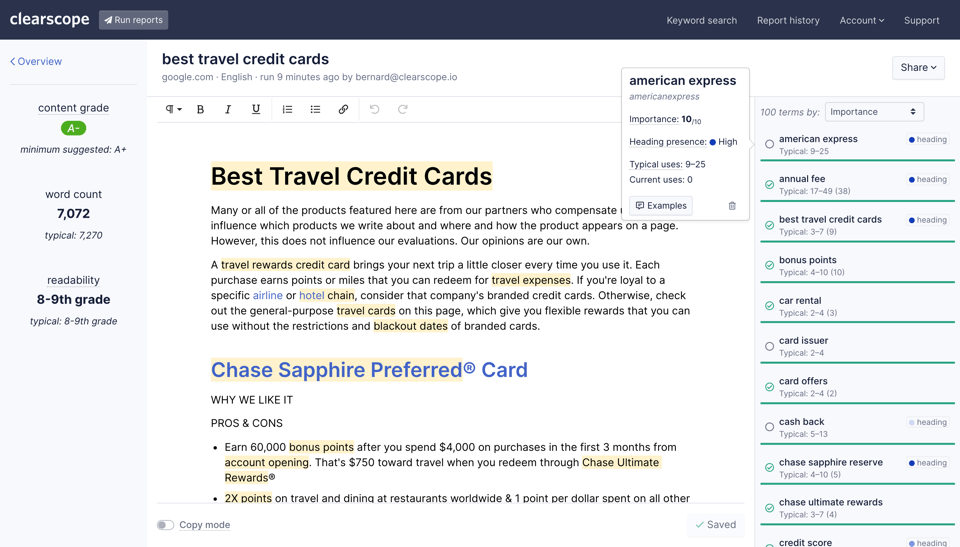
The second thing is that these tools are not a replacement for content marketers. They merely give suggestions and you can use terms such as "espresso machine" the exact 10 times the tool is asking for. Meanwhile, your content could be crap.
Take these tools with a grain of salt and rely on your instinct to create the best answer to the searcher's intent. While they are good as general guidelines, these tools should never be your main help for optimizing your written content around a keyword.
The one thing that I found is that a piece you wrote 6 months ago fared well in Clearscope or some other tool of your choice. Jump to six months later and when you run that same content through this app, you'll see the content now graded as B instead of an A. The reason is simple - the calculations are made based on the top 10 search results.
Having this in mind, once again, don't rely too much on these optimization tools and aim to create the best, most relevant answer to a search query.
Backlink analysis

But why is that important for me as a writer? - you may ask, and you may also have a point.
However, you'll be able to learn quite a lot by analyzing a backlink profile of a website or a specific post. Some posts tend to earn links naturally because of their quality and relevance and other writers will run into them, find them useful and link to them. For example, Brian Dean's entire blog is chock-full of great posts that other writers link to naturally.
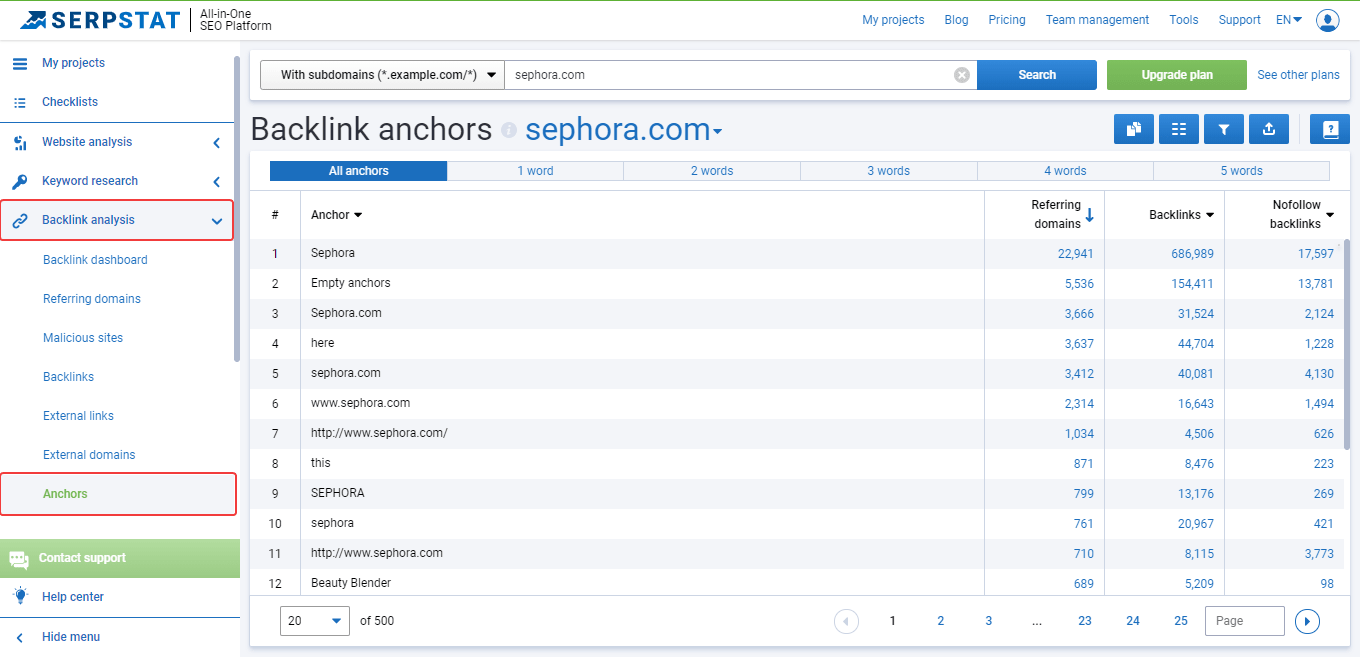
Then there is the other side, the links which are built. It's no secret that many tech-savvy businesses nowadays build links to their posts, either by paying others to link to them (which is strictly against Google's guidelines) or by using strategies such as link swapping and guest posts to build links in a more natural way.
You'll be able to spot links that are built because they will usually point towards pages in an unnatural way. For example, if you see an anchor text "espresso machine" pointing to a page with espresso machines on discount, the chances of the link being built (instead of earned naturally) are pretty high. In general, most writers like myself will link to informative blog pages rather than product or landing pages, so that's a tell-tale sign of a built link.
This is also a great piece of information to have. If a competitor is building links to a certain page that is ranking for a keyword, it means that the keyword is strategically important to them. It could bring in lots of traffic or plenty of conversions. As such, it's a good idea to investigate if you could rank for it too.
Most of today's SEO software also comes with backlink reports. That way, you can get an email with all of your (and your competitors') newly acquired backlinks in a set time period. This will help you make better decisions when choosing your keywords and it will show you where your competitors' SEO efforts are focused.
When you're running low on content ideas, this can be a great inspiration to help you move in the right direction with new keywords. This way, you can make the competition do one part of the research for you.
Great writing
But what does being a great writer even mean?
Great content marketers don't have to write like Shakespeare. In fact, if you look at some of the most successful content out there in terms of performance, it's nowhere near close to literary perfection.
A great SEO writer is capable of producing content which:
- clearly answers the searchers' intent
- provides information in a clear, easy to read content
- has superb information structure and knows where to put the important information and how to discuss the less important details
- supplements their writing by a carefully chosen research
- uses on-page SEO best practices
- organizes their content with the help of H tags and others
- uses links, images and white space to improve the user experience for the reader
- organizes their text in bullet points, lists, tables, infographics and other ways.
I'm sure you remember a piece of text written by an expert who couldn't keep your attention for more than two sentences. Great writers take complex information, distill it down to the simplest bits and present it in a way which is engaging and interesting to read.
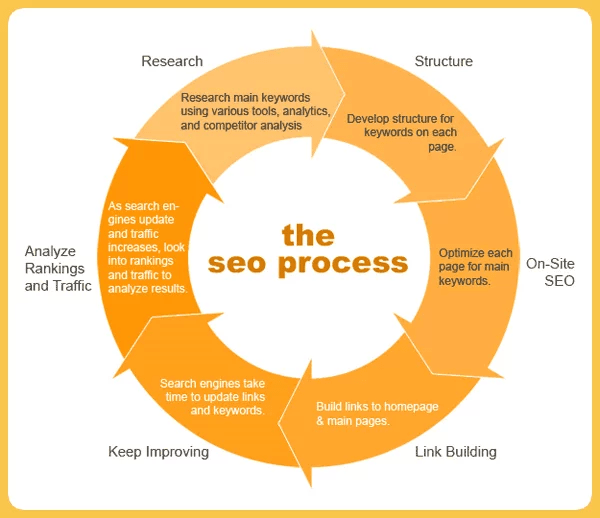
One thing that makes writers on these blogs stand out is that they're talking to the audience as if they're old friends. Whether you're an expert in the topic or you just started learning about it yesterday, you won't have a hard time understanding anything. That is the power of great writing.
Another thing that helps greatly is storytelling. Regardless of how dry and boring a topic may seem to be, great writers have a way to draw the reader into the piece by creating a story from the very introduction. By the time you reach the first section, you're reading because you want to find out more and see where the writer takes you. This is a crucial skill for writers but it too can be learned.
The readability as a key piece of the puzzle
Occasionally, I'll break the rhythm by having a single line as a paragraph.
It also means making your content skimmable. You need to have a great structure for your pieces, with the most important information in your H2 and H3 headings. I always write the H2s and H3s first, before moving on to writing the actual content.
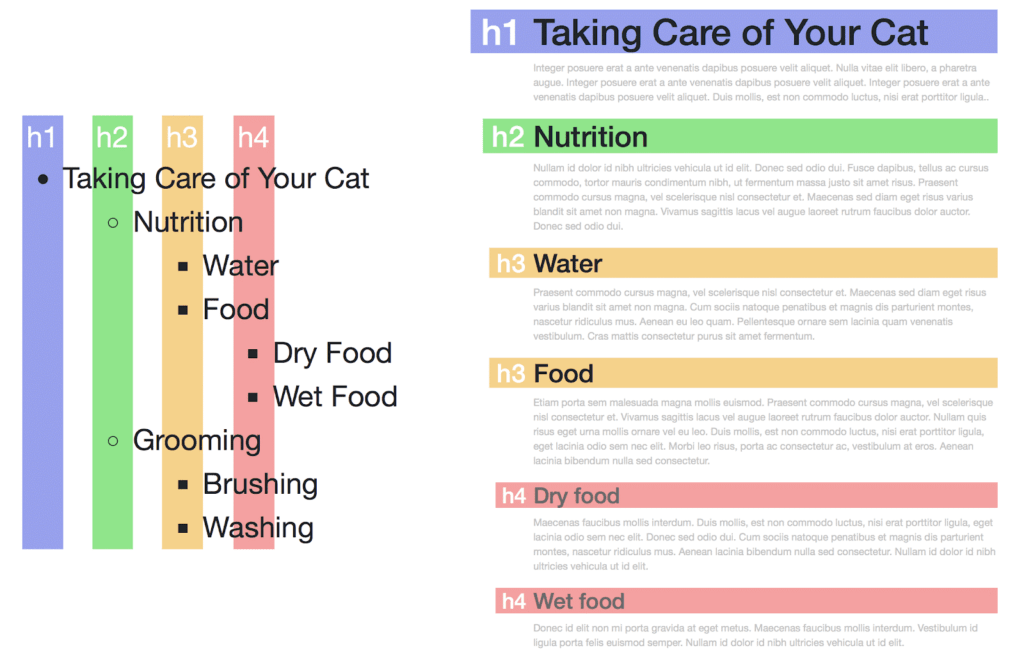
If you have the option, include a table of contents in your content too. If your article is long enough to warrant it, this will make it easier to jump to the right information. I personally only use tables of content only for blogs that are more than 2,000 words in length.
Then there are the images. They make for a nice illustration of what you're trying to say, but they also do wonders for readability. Having an image every now and then breaks up the text and lets the reader rest for a bit before moving on.
My best practice is using one image per 400-500 words of text. It's not set in stone, but it's a good way to create space between long sections of text.
In general, a good content marketer understands the value of content which is easy on the eyes. Search engines will scan through your content in seconds, but remember that they judge your content based on the time spent on the website. The easier it is to read a piece of content, the better it will fare in search engine results.
Research skills
After two days of work, the post was finished and live on their blog. A couple of months later and the post has more than 1,000 backlinks from over 500 referring domains and it ranks for more than 500 organic keywords.
How did that all happen? I wrote a solid piece of content back in 2019 and it was picked up by Glassdoor, the well-known HR website. After they linked to it, more links started coming to the article.
The reason for all of that success from a single article was research. Instead of writing another listicle with X Things To Know When... I wrote a comprehensive guide on the cost of hiring. It was relatively easy to do, with so much data available out there.
I found what the average cost of onboarding, replacing and hiring a new employee was. The sources for this were widely available online. I used the chance to link to these sources to make my research more credible and backed with data and facts.
Now here is the thing. Google and other search engines will determine the quality of your content according to a number of factors. One of those factors are the external links you have pointing from your piece to other websites. Your external links need to be high-quality and point to reputable articles from leading industry websites.
This is where research comes in. For this specific piece, I found lots of resources online. For example, you can find the cost of turnover in many articles on page 1, but each of those articles quotes another research done by a university or an independent research group.
Always quote the original research when you can. A lot of times, when you quote a piece with "X Statistics on Something", you're actually linking to a competitor and reducing your own chances of ranking for a certain keyword.
Having said all this, some pieces just don't have the opportunities to link to independent research. That doesn't mean that you shouldn't do your research. Link to relevant sources in your industry and make sure that the sites you link to are relevant and with high domain authority. Needless to say, do not link to the competition that you're trying to beat in the SERPs.
As for my piece that performed well, the reality is that it didn't bring anything new to the world. All of the great data was already out there, I just had to do some research and put it all together in one well-structured post and that's all it took for it to rank.
Editing skills
Like many other writers, I admit that I'm not a great editor. Also like many others, I use a range of tools to help my content sound and look better when finished. Some tools that you can use to help with edits include:
These will give you some suggestions on the improvements that you can make to polish up your pieces and they do about 90% of the work for you. However, they'll only spot the errors in grammar, spelling and punctuation and you'll still miss some of the finer nuances that you need to fix as a part of the editing process.
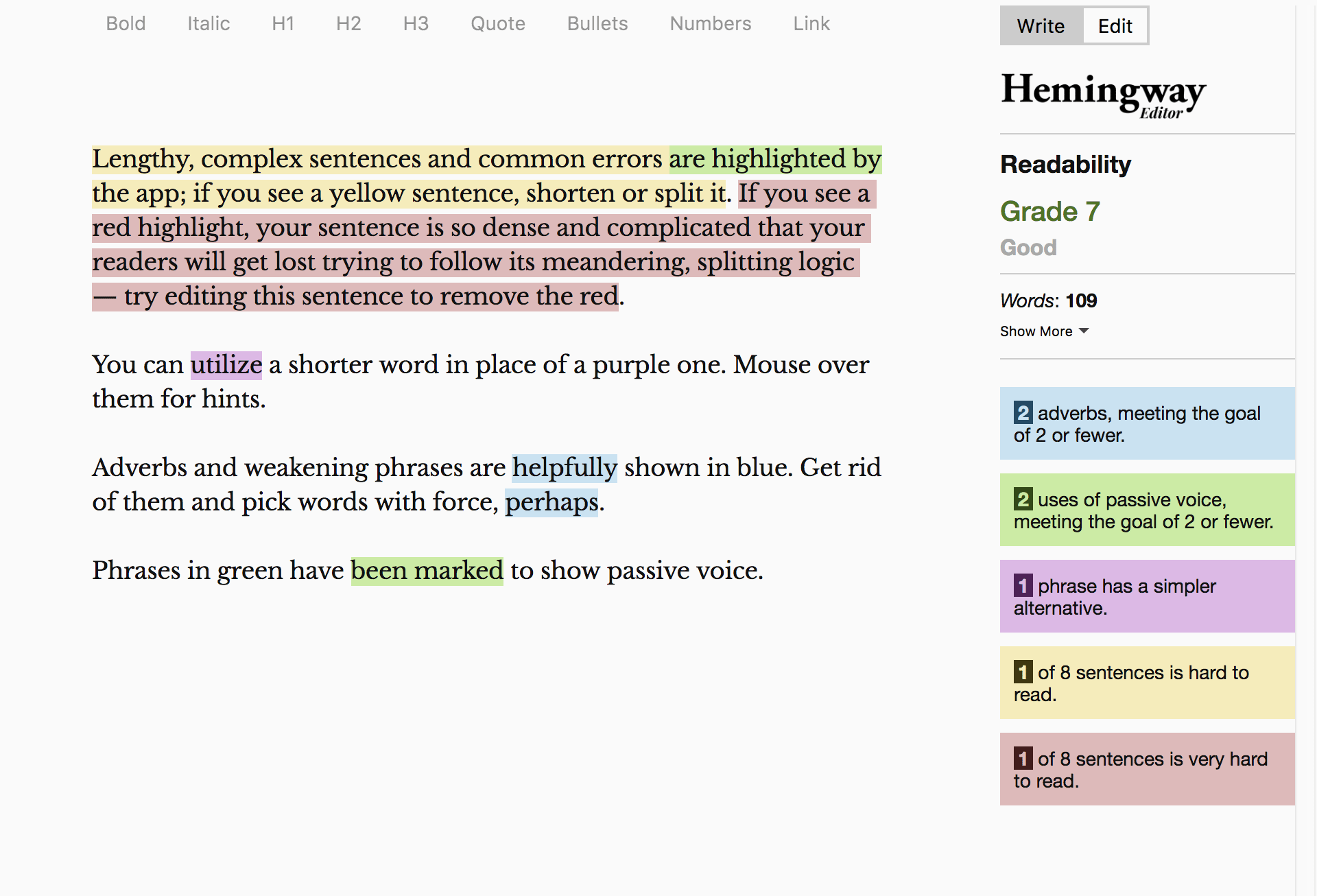
Remember to never rely solely on editing tools to get the job done. Besides the written content, you will also need to check for links, images and formatting, which won't be captured by any of the aforementioned tools.
Wrapping up
The bad news is, becoming a great content marketer takes time and quite a bit of learning. The good news is, all of these skills can be taught and most content marketers weren't born great writers. You too can create amazing content that ranks - all you have to do is get started with reading today.
Speed up your search marketing growth with Serpstat!
Keyword and backlink opportunities, competitors' online strategy, daily rankings and SEO-related issues.
A pack of tools for reducing your time on SEO tasks.
Discover More SEO Tools
Text Analysis Tool
Unlock the power of your text data with our advanced Text Analytics Tools
AI Content Detection
Ai Content Checker – realize if the text is AI-generated
AI Text Generator
Try our AI Content Writer tool and streamline your content creation process
AI Content Tools
AI Content Marketing Tools – simplify and optimize the content creation process
Recommended posts
Cases, life hacks, researches, and useful articles
Don’t you have time to follow the news? No worries! Our editor will choose articles that will definitely help you with your work. Join our cozy community :)
By clicking the button, you agree to our privacy policy.


